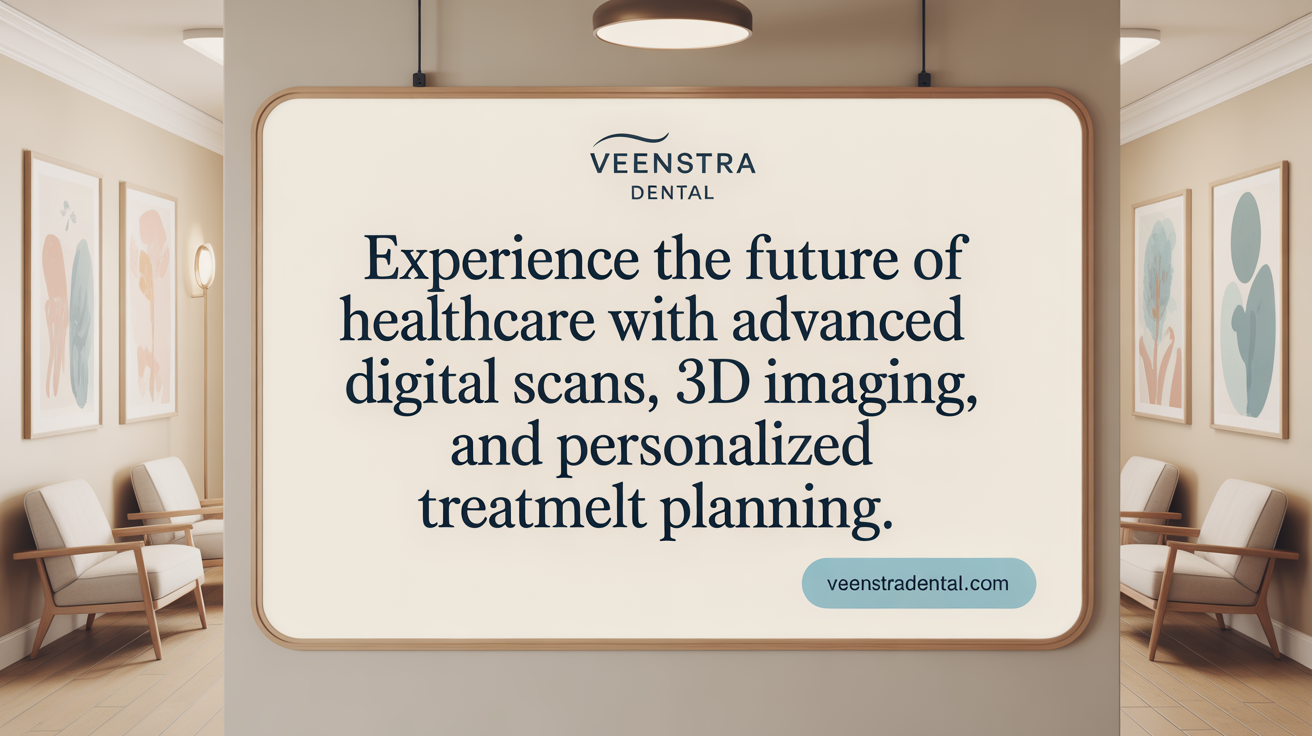Understanding the Path from Exam to Customized Treatment
Embarking on the journey from a thorough dental exam to a personalized treatment plan is a critical step in ensuring long-term oral health and patient satisfaction. This process blends modern diagnostic technology, comprehensive patient assessment, and collaborative planning to craft tailored dental care that addresses each individual's unique needs and goals.
The Foundation: Comprehensive Dental Examination and Diagnostic Imaging

Initial visual inspection of teeth, gums, and overall oral structures
The first step in a thorough dental examination involves a careful visual inspection of the teeth, gums, and surrounding oral tissues. The dentist assesses for signs of decay, gum disease, fractures, or abnormalities within the mouth. This inspection helps identify issues that might not be visible through imaging alone and provides a clear overview of the patient’s oral health.
Use of advanced diagnostic tools including digital radiography, intraoral cameras, and 3D imaging
Modern dentistry leverages technology to enhance diagnostic accuracy. Digital X-rays provide detailed images of teeth and bone structures, revealing hidden cavities or bone loss. Intraoral cameras allow patients to see high-resolution images of their mouths, improving understanding and communication. 3D imaging offers comprehensive views of jawbones and other structures, essential for planning complex treatments like implants or orthodontics.
Conducting soft tissue and oral cancer screenings
As part of the exam, dentists perform soft tissue assessments and oral cancer screenings. These screenings involve examining the cheeks, palate, tongue, throat, and lips for any unusual lumps, lesions, or discolorations. Early detection of oral cancer significantly improves treatment outcomes, making these screenings vital components of routine exams.
Assessment of bite, jaw alignment, and oral health indicators
Evaluation of bite and jaw alignment helps detect malocclusion, TMJ disorders, or other functional issues. The dentist also checks for signs of bruxism (teeth grinding) and malocclusion, which can impact long-term oral health. These assessments guide appropriate interventions to improve function and comfort.
Review of medical and dental histories to understand systemic and dental factors
A comprehensive exam includes reviewing the patient’s medical and dental histories. This review helps the dentist understand underlying health conditions like diabetes or cardiovascular issues that can influence dental treatment. It also identifies previous dental treatments and habits that may affect current oral health, ensuring all factors are considered for a personalized care plan.
Patient History and Assessment: The Cornerstone of Personalized Care
Gathering detailed patient medical and dental history
A thorough review of a patient’s medical and dental background is the first step in creating a personalized treatment plan. This process includes asking about past dental treatments, current health conditions, allergies, and medications. Understanding the patient's overall health helps identify factors that may influence dental care, such as diabetes or heart disease.
Evaluating oral hygiene habits and lifestyle factors like diet and tobacco use
Dentists assess daily habits such as brushing, flossing, and mouthwash use. Providers also explore lifestyle choices like diet, alcohol consumption, and smoking, which can impact oral health. For example, tobacco use increases the risk of gum disease and oral cancers.
Discussing previous dental experiences and concerns
Patients are encouraged to share past dental visits, concerns, fears, and expectations. This dialogue helps the dentist understand the patient's comfort level and tailor care accordingly, fostering trust and reducing anxiety.
Role of patient feedback in refining care approach
Feedback from patients guides the dentist in adjusting treatment methods and improving comfort. Open communication ensures that treatment aligns with personal goals and lifestyle, leading to higher satisfaction and better outcomes.
Identifying risk factors affecting dental health
The assessment highlights risk factors such as poor oral hygiene, genetic predispositions, or medical conditions. Identifying these allows for proactive measures, like preventive care or lifestyle modifications, to maintain long-term oral health.
Engaging in comprehensive patient history and lifestyle evaluation ensures each dental care plan is tailored, maximizing effectiveness and patient confidence. This initial step is vital for achieving optimal oral health and a long-lasting smile.
Leveraging Modern Technology for Precision and Comfort

Benefits of digital radiography and intraoral cameras in enhanced diagnosis
Modern dental practices like Hagerstown Family Dental utilize advanced tools such as digital radiography and intraoral cameras to improve the accuracy of diagnoses. Digital X-rays provide detailed images of teeth and bone structures, often with less radiation exposure, enabling quick and clear visualization of cavities, bone loss, or other issues.
Intraoral cameras allow dentists and patients to see inside the mouth on a screen, providing real-time visuals of areas needing attention. This enhances understanding, helps identify problems early, and encourages patient involvement in treatment decisions.
Incorporation of 3D scanning and CBCT for detailed bone and tissue mapping
Three-dimensional (3D) imaging, including Cone Beam Computed Tomography (CBCT), offers detailed views of the mouth’s bones, tissues, and roots. This technology is particularly useful for planning complex procedures like implants or jaw surgeries.
CBCT scans give a comprehensive picture of bone density and structure, ensuring precise placement of restorations and implants while minimizing risks. This detailed mapping supports more predictable and successful treatment outcomes.
Application of CAD/CAM and 3D printing in treatment planning and restorations
Computer-Aided Design and Manufacturing (CAD/CAM) technology streamlines the creation of dental restorations such as crowns, veneers, and bridges. Using digital impressions, dentists can design restorations on a computer, then produce them with high precision using milling machines.
3D printing complements this by enabling rapid prototyping and customizing dental appliances or surgical guides tailored to each patient’s anatomy. These innovations reduce fabrication time and improve fit and appearance.
Improving patient understanding and reducing anxiety through visual aids
Visual tools like intraoral cameras and 3D images help patients better understand their oral health condition. Seeing detailed images of their teeth and gums fosters trust and clarifies the necessity of recommended treatments.
This transparent communication can reduce anxiety, especially for those undergoing invasive procedures or cosmetic treatments, by making the process more understandable and predictable.
Ensuring accuracy and customization via technological advances
The integration of these technologies ensures that diagnoses and treatment plans are highly accurate and customized. Digital scans and 3D images allow for precise assessments of problem areas and facilitate the design of tailored interventions.
Ultimately, these innovations lead to more comfortable procedures, shorter treatment times, and improved long-term results, aligning with the patient-first philosophy at Hagerstown Family Dental.
Developing the Personalized Treatment Plan: Collaboration and Customization

How does a dentist form a personalized dental treatment plan?
Dentists develop tailored treatment strategies by thoroughly examining the patient’s entire mouth, including teeth, gums, jaw alignment, and bite. They review the individual’s dental and medical history to identify underlying issues and formulate goals for both health and aesthetics. Using advanced diagnostic tools like digital X-rays and intraoral cameras, they gather detailed imagery to detect problems not visible to the naked eye.
During the consultation, the dentist explains the findings and discusses various treatment options, such as preventive care, restorative procedures, or cosmetic interventions. This collaborative approach ensures the plan addresses the patient’s unique needs, lifestyle, and preferences.
Special attention is given to the patient’s overall health conditions, habits, and aesthetic goals. For instance, a patient interested in improving smile appearance might choose cosmetic treatments like whitening or veneers, alongside necessary restorative work like crowns or implants. The dentist also considers the patient’s ability to maintain treatment outcomes through home care and ongoing preventive visits.
Multiple treatment options are presented, with clear explanations of benefits, risks, costs, and timelines. Patients are actively involved in decision-making, choosing among options that best align with their priorities. Additionally, the plan sequences treatments—addressing urgent issues first, followed by elective or cosmetic procedures—to optimize results and healing.
The entire process is supported by modern technology, ensuring high precision and efficiency. The ultimate goal is to craft a comprehensive, realistic plan that promotes long-term oral health, enhances appearance, and fits within the patient’s lifestyle and budget. Regular re-evaluation ensures the plan remains suitable as needs evolve, fostering trust and ongoing care.
Understanding the Phases of Dental Treatment Planning
What are the typical stages or phases of treatment planning in dentistry?
Dental treatment planning is a structured process that unfolds across several critical stages, ensuring a comprehensive and personalized approach to each patient's oral health. These stages include emergency care, disease control, restorative treatments, definitive care, and ongoing maintenance.
Initially, the focus is on addressing urgent issues such as severe pain, trauma, or infection through emergency interventions. These immediate actions aim to relieve discomfort and stabilize the patient.
Following stabilization, the next step involves controlling and preventing disease progression. This could include procedures like deep cleaning, fillings, or periodontal therapy to eliminate active decay or infection.
Once the oral environment is stabilized, restorative treatments are planned to rebuild function and aesthetics. Restorative options might include crowns, bridges, implants, or veneers, depending on individual needs.
The definitive phase encompasses comprehensive rehabilitative procedures that restore full oral function and appearance. These are often complex procedures tailored precisely to improve the patient’s bite, smile, and overall oral health.
Finally, ongoing maintenance is crucial. Regular check-ups, cleanings, and patient education on proper home care help preserve the results achieved and prevent future issues.
A final review before concluding treatment ensures that stability has been maintained. Follow-up appointments are scheduled at specified intervals to evaluate progress and reinforce oral health habits.
The timeline of treatment can extend several years, especially for cases involving extensive rehabilitation. In specialized circumstances, such as root canal therapy, assessments may continue over several years, although these do not affect the overall duration of the initial treatment plan.
By systematically progressing through these phases, dentists can deliver effective, lifelong oral health solutions that align with each patient's unique needs, ultimately fostering better outcomes and satisfaction.
The Role and Importance of Patient Consent in Treatment Planning

What is the role and significance of patient consent in dental treatment planning?
Patient consent is an essential part of ethical dental practice and legal compliance. It involves informing patients about their treatment options, including the specific procedures, expected benefits, potential risks, and available alternatives.
At Hagerstown Family Dental, obtaining consent not only protects the practice legally but also promotes transparency and shared decision-making. Patients are encouraged to ask questions and understand their treatment plans before proceeding.
The process usually includes thorough discussions about the nature of recommended procedures, such as restorations, implants, or cosmetic treatments. When patients agree to move forward by signing a treatment plan document, it confirms they understand the details and give their informed approval.
Proper documentation of this consent is vital. Keeping signed records in the patient’s file ensures that the practice complies with regulations like HIPAA and state laws. It also safeguards the rights of patients and the professional responsibilities of dentists.
Clear and complete records enhance continuity of care, facilitate communication among dental team members, and can be critical if questions or legal issues arise. Ultimately, patient consent nurtures trust, fosters open communication, and supports a transparent, respectful relationship between patients and their dental care providers.
Preventive Care and Early Detection: Cornerstones of Tailored Dentistry
What is the role of routine exams and cleanings in maintaining oral health?
Regular dental visits, including exams and professional cleanings, are fundamental for maintaining healthy teeth and gums. These appointments help remove plaque and tartar buildup, which can lead to cavities and gum disease if left untreated. Routine checkups also enable early detection of potential issues, often before they become painful or complex to treat.
How important is the detection of early decay, gum disease, oral cancer, and bite disorders?
Early identification of dental problems significantly improves treatment outcomes. During examinations, dentists use advanced tools such as digital X-rays and intraoral cameras to spot decay, gum inflammation, and abnormalities like oral cancer signs. Detecting bite or alignment issues early helps prevent future complications related to jaw pain, wear, and TMJ disorders.
What preventive treatments are commonly used?
Preventive measures like fluoride applications and dental sealants provide added protection. Fluoride helps strengthen enamel, making teeth more resistant to decay. Sealants act as a barrier to prevent food and bacteria from settling into chewing surfaces of molars. These treatments are especially beneficial for children but are also effective for adults at higher risk.
How does early intervention reduce treatment complexity and cost?
Addressing dental issues early often means simpler, less invasive procedures such as fillings instead of root canals or extractions. This proactive approach can save patients money and discomfort in the long run, while also preventing serious health issues that may arise from untreated oral diseases.
How are maintenance plans personalized based on patient risk factors?
Each patient’s risk for dental problems varies depending on habits, medical history, and lifestyle. Dentists craft tailored maintenance plans that may include more frequent cleanings, specialized home care instructions, and lifestyle modifications. This customized attention enhances oral health and encourages long-term wellness.
From Diagnosis to Treatment: Common Procedures in Personalized Plans
What treatments are typically included in a personalized dental care plan?
A customized dental treatment plan at Hagerstown Family Dental covers a wide range of procedures designed to restore, enhance, and maintain oral health. Restorative options include fillings for cavities, crowns to strengthen weakened teeth, and dental implants for missing teeth.
Cosmetic treatments such as teeth whitening, bonding, and veneers are also common. For more complex needs, options like orthodontics or full mouth reconstruction may be incorporated.
How are treatments sequenced for the best outcomes?
Sequencing begins with addressing urgent problems like pain or infection. Once stabilized, focus shifts to disease control and restoring functionality.
Restorative procedures are often scheduled to rebuild structure, followed by cosmetic procedures to improve appearance. The plan is tailored to allow proper healing between phases, ensuring each step builds on the previous one.
When is collaboration with specialists involved?
Certain cases require a team approach. For instance, complex restorative work, dental implants, or orthodontics often involve specialists like periodontists, oral surgeons, or orthodontists. These collaborations ensure precise, effective treatment tailored to individual needs.
How does the patient’s aesthetic desire integrate with functional health?
While health remains a priority, patient aesthetic goals are carefully incorporated. Treatments like veneers, bonding, or whitening are planned not only to boost confidence but also to complement functional restorations. This holistic approach helps maintain both beauty and health.
| Treatment Type | Common Procedures | Additional Details |
|---|---|---|
| Restorative | Fillings, Crowns, Root Canals, Implants | Restores damaged or missing teeth |
| Cosmetic | Whitening, Bonding, Veneers | Enhances smile appearance |
| Complex Procedures | Orthodontics, Full Mouth Reconstruction, Surgical Implants | Addresses extensive or complicated dental issues |
Creating a detailed, personalized treatment pathway ensures each patient’s unique needs and desires are met, leading to healthier, more attractive smiles.
The Patient’s Journey: What to Expect from Exam to Treatment Completion
Initial appointment structure including history, exam, imaging, and consultation
The journey begins with a comprehensive initial examination, lasting about 45 to 60 minutes. During this visit, the dentist reviews your medical and dental history, discusses your concerns, and performs a thorough visual inspection of your mouth. Diagnostic imaging, such as digital X-rays and intraoral cameras, are used to identify issues beneath the surface, including cavities, gum disease, or even oral cancer. A professional cleaning may also be included to remove plaque and tartar, providing a clear view of your oral health.
This detailed assessment helps form a complete picture of your oral condition, allowing the dentist to develop an effective treatment plan tailored specifically to your needs and goals.
Duration and steps involved in follow-up visits
Follow-up visits vary based on the treatment required. Simple procedures like sealants or fillings can often be completed in a single appointment, while more extensive treatments like implants or crowns may take several visits over weeks or months.
Each visit typically involves further assessment, preparation, and execution of procedures such as restorations, periodontal treatments, or adjustments. Regular follow-ups help monitor healing, ensure the success of procedures, and address any ongoing concerns.
Variability of treatment timelines based on complexity
The length of your treatment plan depends on its complexity. Routine preventive care might involve biannual cleanings, while complex restorative or cosmetic procedures require a detailed schedule. For example, dental implants may need multiple stages involving surgical placement, healing, and restoration, stretching over several months.
The dentist will communicate these timelines upfront, ensuring you understand each phase and what to expect.
Importance of communication and patient education throughout the journey
Clear communication is vital. Throughout your treatment, your dentist will explain findings, discuss options, and answer questions. Patient education about oral health, home care, and the reasons behind recommended procedures fosters trust and encourages cooperation.
Being involved in decision-making helps you feel confident and reduces anxiety, making your experience more comfortable and successful.
Post-treatment maintenance and long-term relationship building
After completing your treatment, regular check-ups and cleanings are crucial for maintaining results. Your dentist will develop a personalized maintenance plan, including advice on oral hygiene, diet, and habits that influence your dental health.
Building a long-term relationship with your dental team ensures continuous monitoring and early detection of new issues. This ongoing care approach supports healthier teeth and gums, enhancing your overall well-being and confidence.
| Step in Journey | Typical Duration | Key Focus | Additional Notes |
|---|---|---|---|
| Initial exam and diagnostics | 45-60 minutes | Assessment and planning | Includes history, exam, imaging |
| Follow-up treatments | Varies (single or multiple visits) | Restorative, cosmetic, or corrective work | Depends on complexity |
| Maintenance and check-ups | Every 6-12 months | Prevention and early detection | Personalized to patient’s needs |
This structured approach ensures that every stage from the first exam to long-term care is patient-centered, technologically advanced, and aimed at preserving your oral health for years to come.
Building Trust Through a Patient-First Philosophy and Transparent Care
Creating a supportive, empathetic environment to reduce anxiety
Hagerstown Family Dental prioritizes a comforting atmosphere where patients feel valued and understood. The staff's empathetic approach helps ease dental fears, making visits more relaxed and positive.
Transparent communication about treatment costs and insurance assistance
Patients are provided clear, upfront information regarding treatment costs and payment options. The practice also offers assistance with insurance matters to streamline access to necessary care.
Empowering patients through education and involvement
Education is a cornerstone of their care approach. Patients participate in discussions about their oral health, treatment choices, and preventive strategies, fostering confidence and collaboration.
Use of advanced technology combined with compassionate care
Modern tools such as digital radiography, intraoral cameras, and 3D imaging enhance diagnosis and treatment precision. These are complemented by a gentle, personalized approach to ensure patient comfort.
Focus on long-term oral health and sustained patient partnerships
The practice emphasizes building lasting relationships through regular check-ups, preventive care, and ongoing support, aiming to improve overall well-being and maintain healthy smiles over time.
The Path to Personalized Oral Health Success
The journey from a comprehensive dental exam to a tailored treatment plan is a detailed and collaborative process designed to optimize oral health outcomes. By leveraging advanced diagnostics, understanding patient history and preferences, and following systematic treatment phases, dental professionals create personalized care strategies that address immediate concerns while promoting long-term wellness. Emphasizing patient consent and transparent communication fosters trust, ensuring informed decisions and lasting relationships. Ultimately, this personalized approach not only enhances oral function and aesthetics but also builds confidence and supports sustained dental wellness for years to come.
References
- The Art of Personalized Dental Care: How Tailored Treatment Plans ...
- New Patient Dental Exam: A Step Toward Better Oral Health ...
- The Art and Science of Tailored Dental Care: A Dentist's Perspective ...
- Creating a Dental Treatment Plan - Dr. Jennifer Pan Prosthodontist
- The Benefits Of A New Patient Dental Exam You Can't Ignore
- Your Guide to a Stress-Free New Patient Dental Exam
- Your Comprehensive Guide to a 3-Step Treatment Planning Process
- Understanding What to Expect During Your First Dental Exam at ...
- Dental Treatment Plan Examples: A Guide for Dentists - Teero
- What to Expect During a New Patient Comprehensive Exam: A Guide
